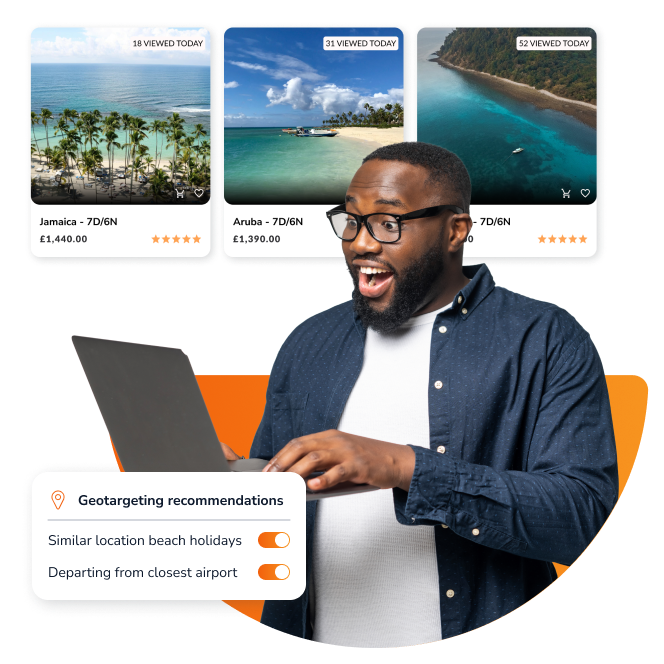Geofencing and geotargeting have emerged as powerful tools for businesses looking to enhance their marketing communications.
While they might sound similar, these techniques have distinct functionalities and applications. This blog post delves into the main differences between geofencing and geotargeting, their specific marketing uses, and practical tips for integrating them into your strategy.
Main differences between geofencing and geotargeting
Understanding the differences between geofencing and geotargeting is essential for businesses aiming to harness the power of location-based marketing. Geofencing focuses on delivering content to users within a tightly defined area, whereas geotargeting casts a wider net, targeting broader geographic locations. Each has unique benefits and applications, critical for strategizing effective marketing campaigns.
Geofencing
Geofencing is a location-based service that creates a virtual boundary around a specific geographic area. This technology uses GPS, RFID, Wi-Fi, or cellular data to trigger a pre-programmed action when a mobile device enters or exits the designated area. Geofencing is precise, targeting users within a narrowly defined space, such as a store, an event location, or a neighborhood.
Geotargeting
Geotargeting, on the other hand, is broader in scope. It involves delivering content or advertisements to users based on their general location, which can be determined through IP addresses, GPS, or other data. Geotargeting allows for targeting at a city, region, or even country level, making it less precise than geofencing but more suitable for widespread campaigns.
When to use geofencing vs geotargeting
The decision of whether to use geofencing or geotargeting depends on your marketing campaign’s objectives. Each approach suits different scenarios based on the granularity of the target location and the desired interaction you hope to have with your audience.
Here’s how to discern the best use for each.
Marketing uses for geofencing
Geofencing is ideal for hyper-local marketing. A marketer would use geofencing in scenarios where engaging customers at a specific location is crucial. Here are some situations where geofencing is particularly useful:
- Local store promotions. When a retailer wants to attract foot traffic to their store, they might set up a geofence around the store to send special offers or coupons to potential customers who enter the area.
- Event engagement. During events such as concerts or conferences, organizers can set up geofences to send attendees notifications about event schedules, nearby booths, or exclusive offers when they are in specific sections of the venue.
- Competitive conquesting. Brands sometimes create geofences around competitors’ locations to entice customers with better deals.
- Loyalty programs. To reward frequent visitors, businesses can set up geofences that recognize when a loyalty program member is nearby and send them personalized rewards or reminders.
- Real-time analytics. Geofencing can be used to track customers’ movement patterns within a geofenced area, including how often customers visit a location, which specific places they stop, and how long they stay.
- Location-based services. Services such as ridesharing or food delivery can implement geofencing to efficiently manage supply and demand within certain busy areas, improving service times and customer satisfaction.
Geofencing is a great choice when the goal is to engage customers in a precise location with timely and relevant messaging, offering a direct way to connect with and influence their in-the-moment decisions.
Marketing uses for geotargeting
With geotargeting’s broader reach, it’s perfect for campaigns targeting users in specific cities or regions. For instance, a company launching a product in a particular city can use geotargeting to reach potential customers in that area. It’s also effective for tailoring content and ads to regional preferences and cultural nuances.
Geotargeting is the tool of choice for marketers aiming to tailor their campaigns to broader geographic segments. Here are key instances where geotargeting is particularly beneficial:
- Regional campaigns. When you want to launch a product or service in a specific city or region, geotargeting allows you to focus your marketing efforts on that area.
- Cultural tailoring. Companies can customize their advertising to resonate with the cultural, linguistic, or societal norms of a particular geographic demographic, enhancing relevance and connection with the audience.
- Disaster response. In times of emergencies or natural disasters, organizations can use geotargeting to send critical information and assistance to the affected areas without alarming those outside of it.
- Seasonal messaging. For seasonal products or services, such as winter gear or air conditioning services, geotargeting helps focus marketing efforts in areas where the season’s change is most relevant.
- Market expansion. When expanding into new markets, businesses can use geotargeting to gradually build brand awareness and gauge interest in different locations before committing to a physical presence.
- Legal compliance. Certain products or services may have geography-related legal restrictions. Geotargeting ensures that promotional efforts comply with local laws and regulations.
By leveraging geotargeting, marketers can ensure that their content is not only geographically relevant but also adjusted for the broader characteristics of the target area, maximizing reach and impact in their desired markets.
Five tips to implement geofencing and geotargeting in your strategy
- Understand your audience — Knowing your target audience is crucial. For geofencing, focus on their local habits and preferences. For geotargeting, consider broader regional trends and behaviors.
- Define clear objectives — Your strategy should align with your business goals. Use geofencing for immediate conversions or foot traffic, and geotargeting for brand awareness or regional promotions.
- Create compelling content — Tailor your messages to the specifics of the location. Personalized content often yields better engagement and response rates.
- Respect privacy — Always maintain ethical standards and comply with privacy laws and regulations. Transparently communicate how and why you collect and use location data.
- Analyze and optimize — Regularly review the performance of your campaigns. Use analytics to understand what’s working and adjust your strategy accordingly.
Conclusion
Geofencing and geotargeting are both effective tools in a marketer’s arsenal, each with its specific uses and advantages. By understanding the key differences and applications, businesses can leverage these technologies to reach their target audience more effectively and create more impactful marketing campaigns. Remember, the key to success is in the strategic implementation and continuous optimization of these technologies.






